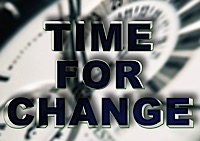
(MoneyWatch) I'm incredulous when I read or hear people talking about some kind of prototypical entrepreneurial profile. Many well-meaning experts, and even empirical research, would have you believe that most successful entrepreneurs fit an identifiable personal mold. But based on my own experience, and my associations with many entrepreneurs -- both successful and not so much -- over two decades, this is simply not true. Some common myths and misconceptions about the personality of entrepreneurs:
The risk-taker myth: This is the classic notion that entrepreneurs are big risk-takers. Certainly some are -- starting a business is inherently, and statistically, risky in and of itself. But the majority I've known are, in fact, quite risk-averse. Or more accurately, they're willing to take necessary risks that they can stomach. Many have no choice but to personally guarantee loans, putting their savings and even their homes on the line. Aside from the risk of outright failure, such extreme personal leverage is often the biggest gamble a small business founder will want or need to take. For sure, there are "skydivers" and all-in gamblers out there who will wager not only their own money, but that of others as well, sometimes on long-shot ideas. But in the great landscape of small business, they are the exception and not the rule.





















